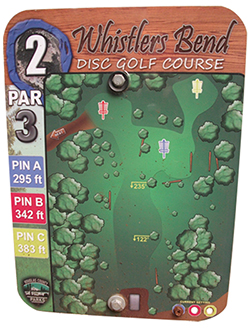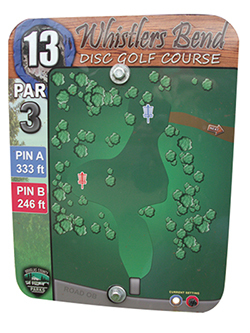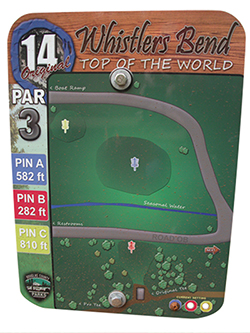
Disc Golf: From Then Until Now
Imagine this: it is the year 1926, and a group of kids in Canada begin throwing around tin plates, trying to hit trees and signposts on a course they laid out on their school grounds. They would play fairly often until their interests shifted. The game they played – Tin Lid Golf – was forgotten for many decades, yet their game was one of the very first incarnations of Disc Golf.
This last weekend, some 86 years later, the scene at Whistler’s Bend disc golf course showed how far the game has come. Approximately 150 nationally ranked professional and amateur competitors played for two days for cash and other prizes, with the winner taking home an estimated grand prize of $500.
It was in the 1960s that the true origins of the sport began. George Sappenfield, freshly graduated from college, remembered an idea that had come to him several years earlier while playing traditional golf. Having been a recreational counselor during his summer breaks, he had the idea that the kids he counseled could play the same game but with discs. When he was hired as the supervisor for the Parks and Recreation department in Thousand Oaks, California, he contacted the Wham-O Manufacturing Company (makers of Frisbee) and asked them for assistance with his plan for a disc golf tournament. The company sent Frisbees and hula hoops (which would be used for targets), and the first ever disc golf tournament was held.
Now, on nearly any given day, there are disc golfers playing at either Riverfront Park or at Whistlers Bend. Old and young alike can be seen, often carrying a bag full of discs that are much more specialized than their Frisbee ancestors.
When Ed Headrick became involved, the sport gained an advocate and an ally who would revolutionize the sport forever. Working for the Wham-O company originally, “Steady Ed” is considered by many to be the driving force behind the rise of the game, not only inventing the modern-era Frisbee, but also designing the first “Disc Hole Pole” and establishing standardized rules in addition to helping establish the Professional Disc Golf Association the Disc Golf Association, and the Recreational Disc Golf Association.
Robert Heilman, who established what is likely Douglas County’s first disc golf course on his property back in 1979, finds it amazing how much the sport has changed over the decades.
“It’s amusing to see how serious it has become. It used to be something to do while walking with friends, drinking beer and farting around. Now it’s serious stuff, it is rapidly expanding and is one of the fastest growing recreational sports in America.”
Today, there are around 65 disc golf courses in the state of Oregon, and Douglas County’s Whistler’s Bend course is regarded as one of the premier venues in the Northwest, with golfers coming from all over the state to play here. The course was designed by Steve Wright, who was also instrumental in convincing the city council to establish both the Riverfront and Whistler’s courses.
“It really is a premier course,” Heilman said of the Whistler’s Bend course; “It is notorious for being one of the two best courses in Oregon.”
With ever-increasing numbers of players, tournaments and courses, the sport is poised to continue growing, and with Whistler’s Bend’s well-known challenges drawing visitors from all across the region, Douglas County is known as a great disc golf destination.




